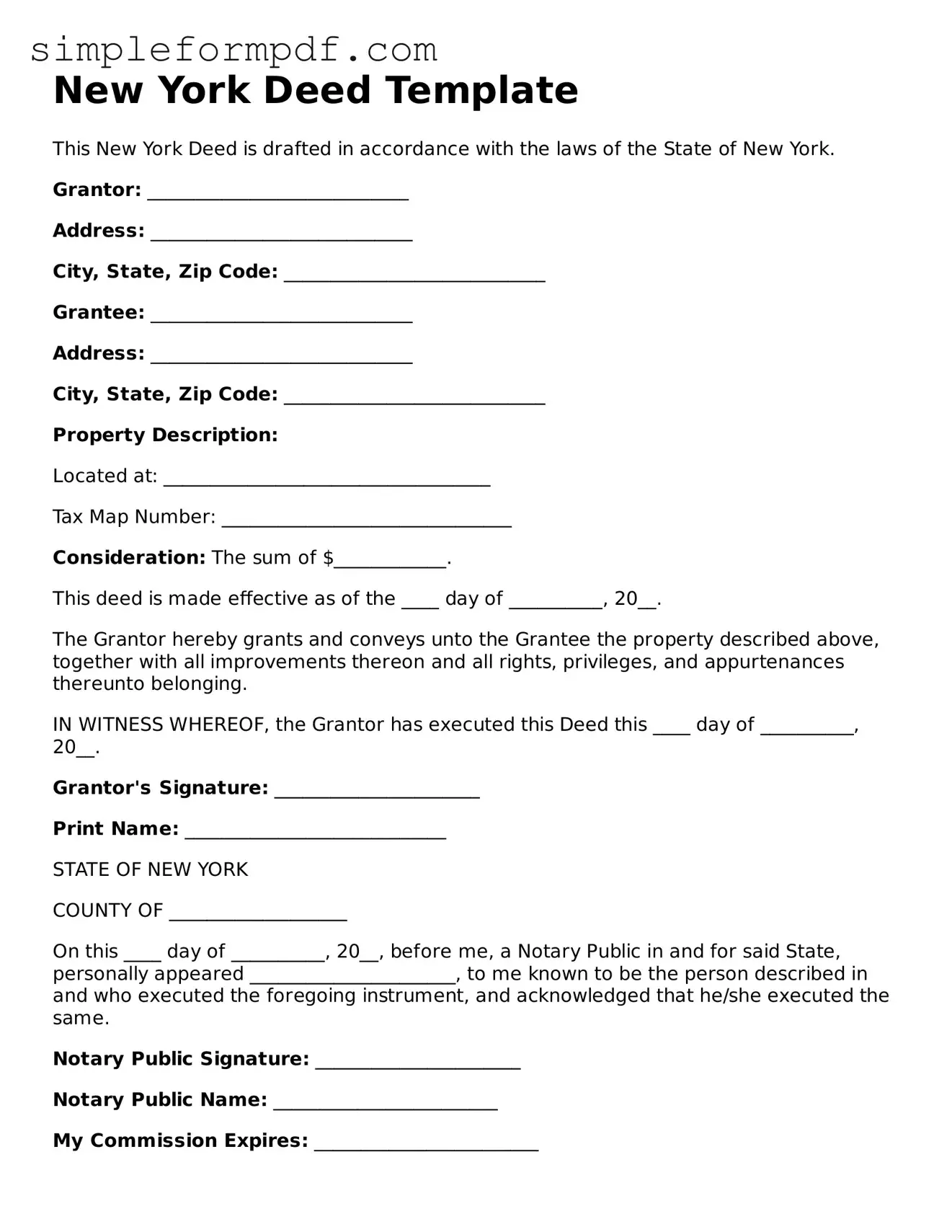New York Deed Template
This New York Deed is drafted in accordance with the laws of the State of New York.
Grantor: ____________________________
Address: ____________________________
City, State, Zip Code: ____________________________
Grantee: ____________________________
Address: ____________________________
City, State, Zip Code: ____________________________
Property Description:
Located at: ___________________________________
Tax Map Number: _______________________________
Consideration: The sum of $____________.
This deed is made effective as of the ____ day of __________, 20__.
The Grantor hereby grants and conveys unto the Grantee the property described above, together with all improvements thereon and all rights, privileges, and appurtenances thereunto belonging.
IN WITNESS WHEREOF, the Grantor has executed this Deed this ____ day of __________, 20__.
Grantor's Signature: ______________________
Print Name: ____________________________
STATE OF NEW YORK
COUNTY OF ___________________
On this ____ day of __________, 20__, before me, a Notary Public in and for said State, personally appeared ______________________, to me known to be the person described in and who executed the foregoing instrument, and acknowledged that he/she executed the same.
Notary Public Signature: ______________________
Notary Public Name: ________________________
My Commission Expires: ________________________
